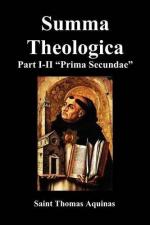I answer that, As stated above (A. 1, ad 4), intention regards the end as a terminus of the movement of the will. Now a terminus of movement may be taken in two ways. First, the very last terminus, when the movement comes to a stop; this is the terminus of the whole movement. Secondly, some point midway, which is the beginning of one part of the movement, and the end or terminus of the other. Thus in the movement from A to C through B, C is the last terminus, while B is a terminus, but not the last. And intention can be both. Consequently though intention is always of the end, it need not be always of the last end.
Reply Obj. 1: The intention of the heart is called a cry to God, not that God is always the object of intention, but because He sees our intention. Or because, when we pray, we direct our intention to God, which intention has the force of a cry.
Reply Obj. 2: A terminus is something last, not always in respect of the whole, but sometimes in respect of a part.
Reply Obj. 3: Enjoyment implies rest in the end; and this belongs to the last end alone. But intention implies movement towards an end, not rest. Wherefore the comparison proves nothing. ________________________
THIRD ARTICLE [I-II, Q. 12, Art. 3]
Whether One Can Intend Two Things at the Same Time?
Objection 1: It would seem that one cannot intend several things at the same time. For Augustine says (De Serm. Dom. in Monte ii, 14, 16, 17) that man’s intention cannot be directed at the same time to God and to bodily benefits. Therefore, for the same reason, neither to any other two things.
Obj. 2: Further, intention designates a movement of the will towards a terminus. Now there cannot be several termini in the same direction of one movement. Therefore the will cannot intend several things at the same time.
Obj. 3: Further, intention presupposes an act of reason or of the intellect. But “it is not possible to understand several things at the same time,” according to the Philosopher (Topic. ii, 10). Therefore neither is it possible to intend several things at the same time.
On the contrary, Art imitates nature. Now nature intends two purposes by means of one instrument: thus “the tongue is for the purpose of taste and speech” (De Anima ii, 8). Therefore, for the same reason, art or reason can at the same time direct one thing to two ends: so that one can intend several ends at the same time.
I answer that, The expression “two things” may be taken in two ways: they may be ordained to one another or not so ordained. And if they be ordained to one another, it is evident, from what has been said, that a man can intend several things at the same time. For intention is not only of the last end, as stated above (A. 2), but also of an intermediary end. Now a man intends at the same time, both the proximate and the last end; as the mixing of a medicine and the giving of health.




